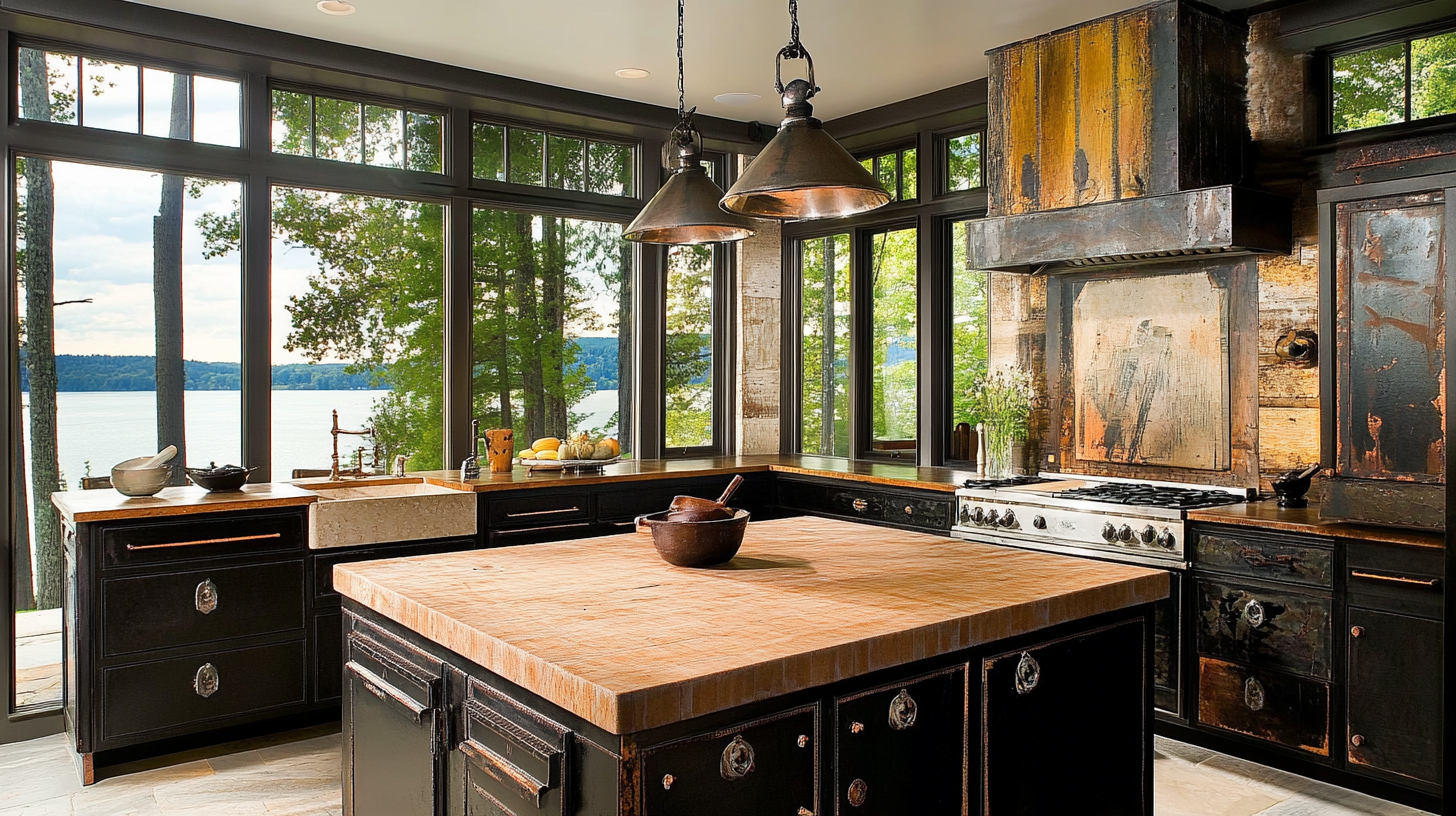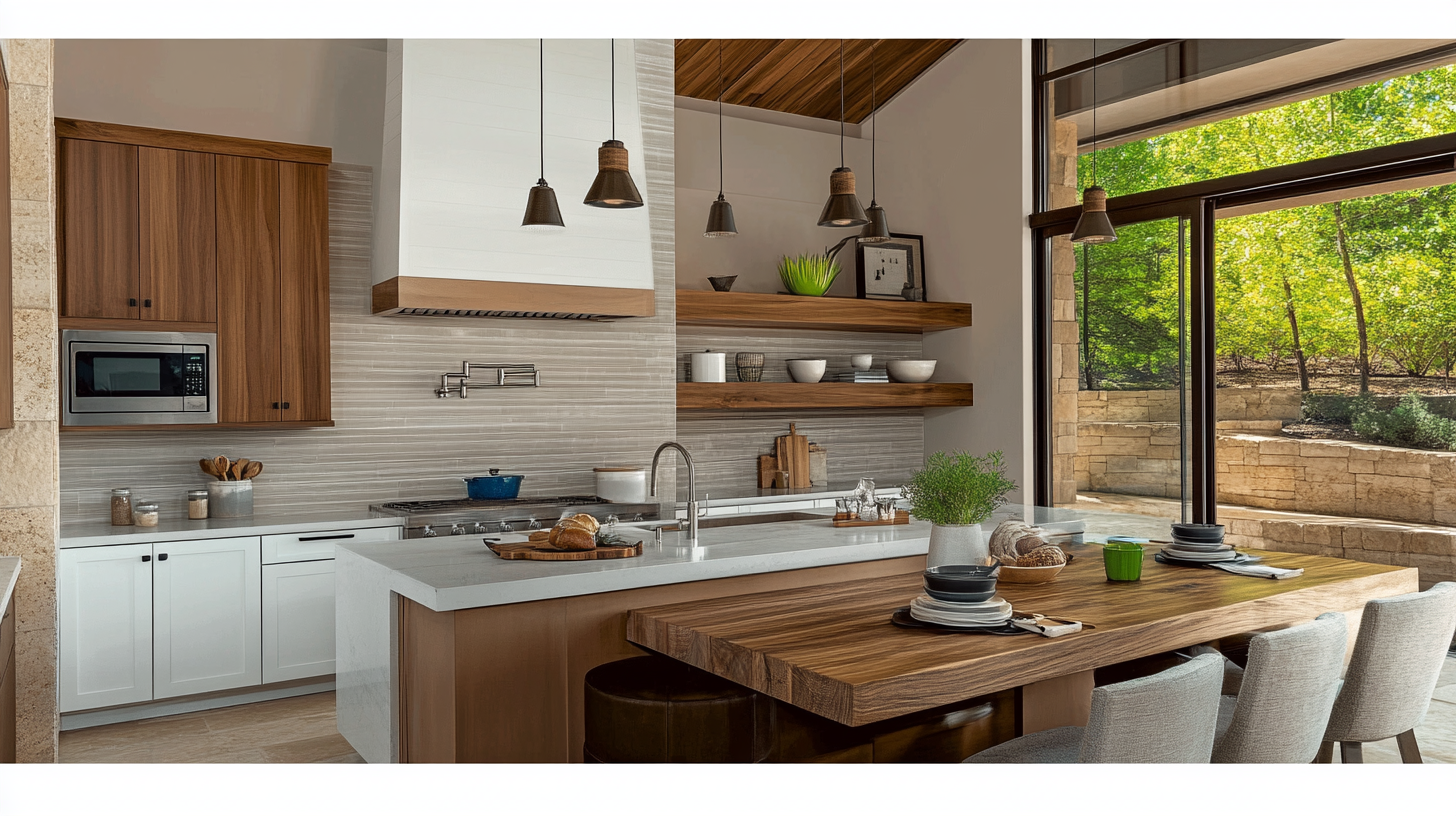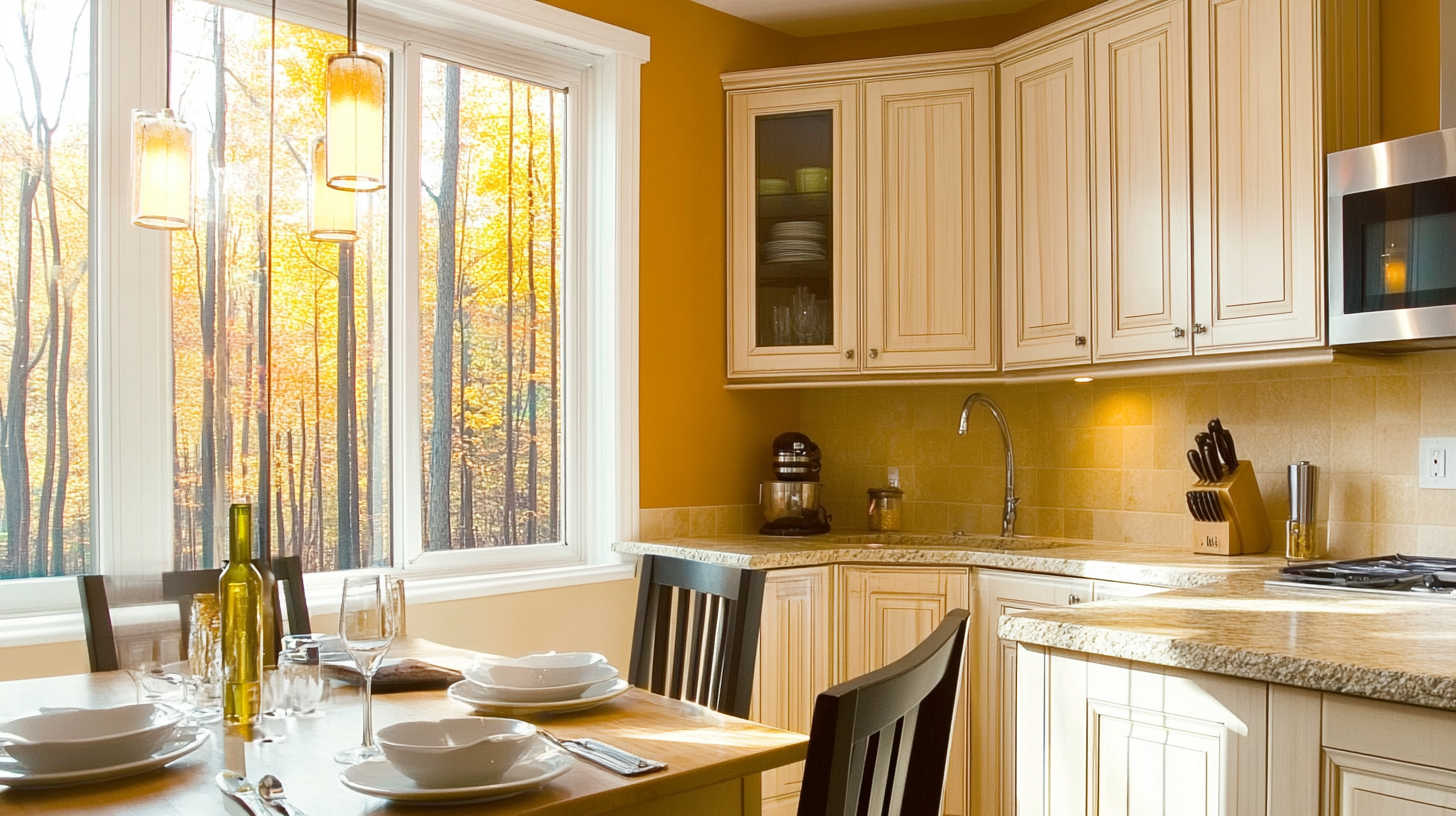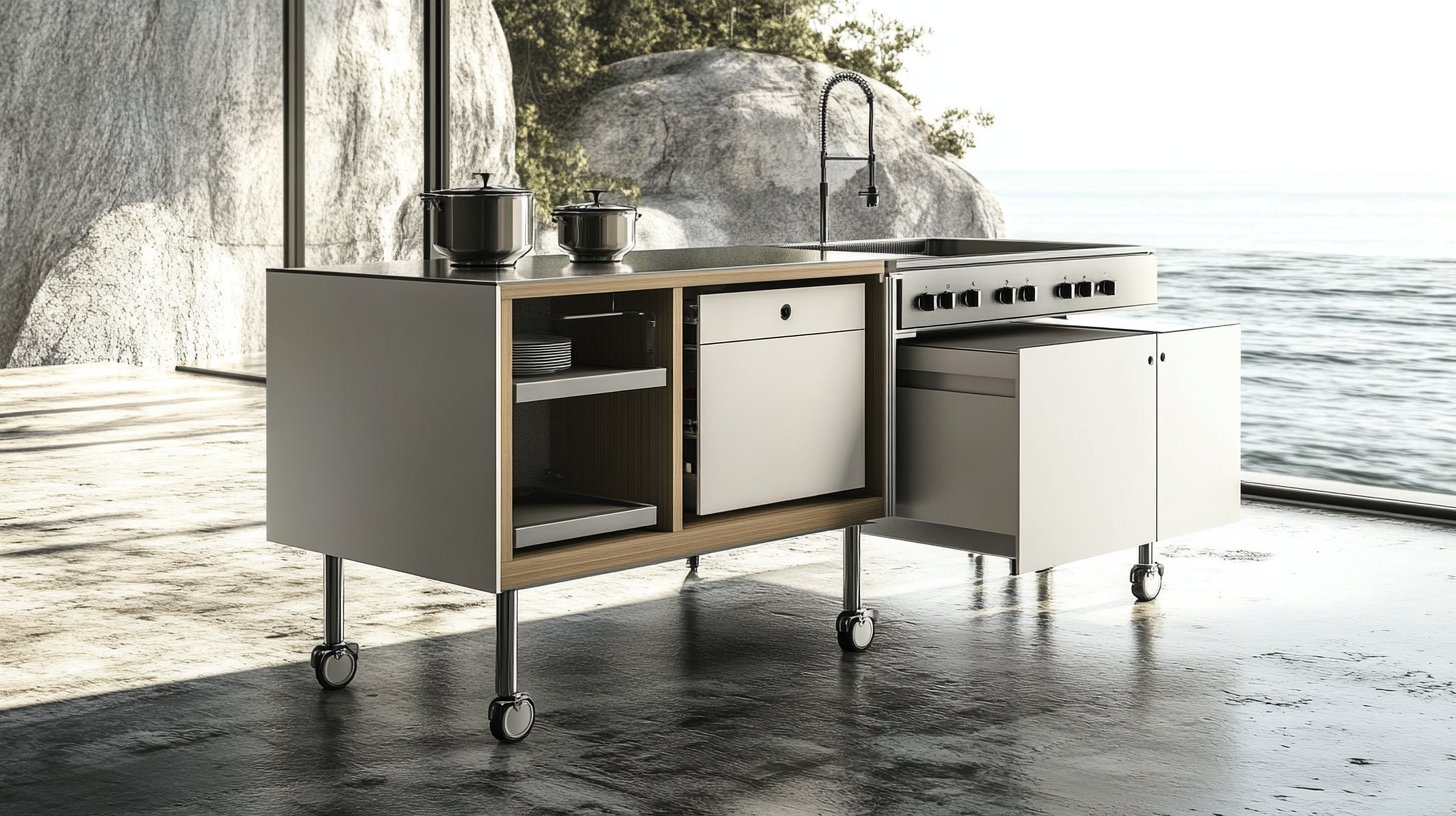The Kitchen Island is Dying: Here’s What’s Replacing It in 2025

Once considered the crown jewel of the modern kitchen, the kitchen island is now losing favor among homeowners and designers alike. As we move into 2025, a shift toward more flexible, personal, and space-conscious design has sparked a quiet revolution in kitchen layouts.
So — if the kitchen island is dying, what’s taking its place?
Let’s explore the top alternatives gaining momentum in today’s home design world.
Why the Kitchen Island Is Falling Out of Favor
The once-iconic island is being re-evaluated for several reasons:
- Space Consumption: In smaller or galley kitchens, islands can disrupt flow and make the space feel cramped.
- Lifestyle Shifts: Post-pandemic living favors flexible, multifunctional spaces rather than fixed, bulky structures.
- Design Redundancy: Islands have become so standard that homeowners are now craving uniqueness and character.
- Maintenance & Traffic: Islands often collect clutter and interrupt traffic between key zones in the kitchen triangle.
What’s Replacing the Kitchen Island?
1. Freestanding Work Tables
A favorite among designers, work tables bring vintage charm and flexibility. Unlike fixed islands, they create a more lived-in, informal aesthetic — perfect for homes that blend cooking, dining, and socializing.
Why it works:
- Easy to rearrange or remove
- Encourages openness and better traffic flow
- Adds character with unique materials (wood, marble, antique finds)
Design Tip: Try a vintage butcher’s block or a reclaimed farmhouse table for a warm, layered look.

2. Dining Tables as Central Hubs
Instead of isolating kitchen tasks on a utilitarian island, many homeowners are choosing large dining tables that double as prep, gathering, and even work-from-home spaces.
Benefits include:
- Seamless transition between food prep and meals
- Multi-purpose use for remote work or kid activities
- Promotes connection and informality in open-plan kitchens

3. Peninsulas
For compact or U-shaped kitchens, a peninsula is a smarter layout. It offers similar benefits to an island — extra counter space and seating — but is anchored to a wall, saving circulation space.
Ideal for:
- Small kitchens
- Open-concept living/dining spaces
- Those who still want a “bar” feel without the footprint of an island

4. Modular Furniture Solutions
Some designers are going modular: movable cabinets, prep carts, or foldable tables that adjust based on daily needs.
Why modular works:
- Great for renters or flexible living spaces
- Easy to store or reconfigure for parties, holidays, or solo cooking
- Often comes with wheels, storage, and multi-use surfaces

5. Kitchen Islands Reimagined
Is the island truly gone? Not entirely. In many cases, it’s simply being redefined.
Today’s islands are often:
- Slimmer and mobile
- Built from vintage furniture (dressers, desks)
- Topped with natural stone or butcher block for warmth
- Devoid of plumbing to simplify structure and reduce cost
What Designers Are Saying
“We’re seeing more clients request work tables over traditional islands. They create a warm, authentic feeling and don’t overpower the space.” — Claire Thomas, Interior Designer, Los Angeles
“Flexibility is the new luxury. Freestanding kitchen pieces let people live more intuitively with their space.” — Ethan Kelley, Modern Home Trends Consultant
Real-Life Case Study: From Island to Table
Before: A 250 sq ft kitchen in Austin, TX featured a bulky built-in island that limited movement and blocked views.
After: The homeowners removed the island and replaced it with a reclaimed oak table. The space became more breathable, allowed for hosting 6 guests, and doubled as a remote work area.
Budget: $950 for the table and stools
Result: “It changed the energy of our kitchen completely.”
Island vs Work Table: Key Differences
- Space Usage: Islands are fixed and take up more floor space. Work tables are movable and allow flexible configurations.
- Storage: Islands provide enclosed cabinetry. Work tables usually offer minimal or open storage.
- Atmosphere: Islands feel built-in and rigid. Work tables feel relaxed, vintage, and informal.
- Budget: A custom island can cost $3,000–$8,000. A reclaimed table setup might cost $600–$2,000.
Final Thoughts: Form Is Following Flexibility
The kitchen island isn’t vanishing entirely — but it’s no longer the default answer. Homeowners in 2025 are choosing spaces that adapt, breathe, and reflect their lifestyle.
Whether it’s a freestanding table, a peninsula, or a set of modular pieces, the replacements are smarter, more sustainable, and far more personal.
FAQ
Q: Is it okay to design a kitchen without an island?
A: Yes. Many modern kitchens use alternatives like peninsulas, dining tables, or work tables to create more open and flexible layouts.
Q: What can I use instead of a built-in island?
A: Try freestanding work tables, vintage dressers, large dining tables, peninsulas, or modular furniture carts.
Q: Is a peninsula better than an island for small kitchens?
A: In most cases, yes. A peninsula saves space while still offering functionality.
Please check with customer service before testing new feature.

